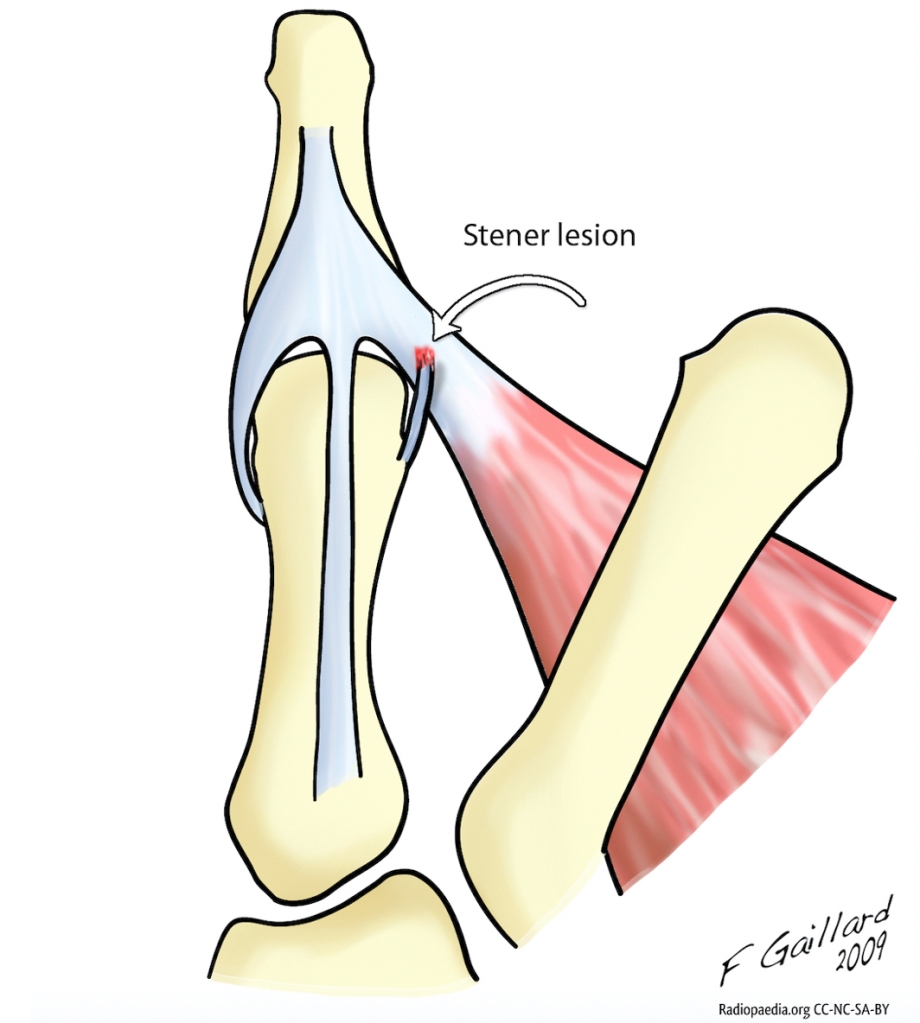What is is?
All joints are stabilised by the soft tissued around the joint. In the small joints of the hand, there are two collateral ligaments on either side of each joint – these ligaments stop the joints opening up in the wrong plane. In addition, all joints have a strong sheet of fibrocartilage which resists hyperextension of the joint, or the joint bending backward.
The ulnar collateral ligament (UCL) of the thumb is particularly important because it allows stable pinch grip. Loss of this ligament, therefore, potentially impairs pinch grip.



How is the UCL injured?
The UCL of the thumb is injured as a result of a fall onto the hand, where the thumb is caught and takes the weight of the body through it. The injury is also known as Skier’s thumb, since skiers are particularly prone to this mechanism.
What is the treatment?
The recommended treatment for this injury depends on its severity.
STABLE INJURIES – Partial tears of the ligament can be painful, but the joint remains stable. The injury will usually heal within 4 weeks, with return of normal function by around 6-8 weeks.
UNSTABLE INJURIES – Where the ligament is completely torn, the joint is unstable. There are 2 types of instability:
Type 1 – Despite being completely divided, if the ligament remains in its normal position, it will heal over the course of around 4-6 weeks, with return of full function within a few months. This injury is usually treated in a plaster for 4 weeks to allow the joint to stabilise.
Type 2 – If the divided ligament becomes displaced (see illustration above), then there is no prospect of the ligament healing because there is soft tissue blocking the ligament from healing back to bone. In this situation, if the ligament is not repaired, then the function of the ligament will be lost. For some people, this is not a major problem, and does not impair overall function, but most find that the instability of the joint has a significant impact on the ability to use the hand normally. Surgery is recommended for such injuries.
Surgical repair of the UCL
Where surgery is being considered, the risks should be weighed up against benefits of repair, and you can read more about the risks of surgery here.
At operation, an incision is made over the back of the joint, and the ligament is sutured down to the bone, to allow it to heal in its normal position. A plaster cast or splint is still necessary for a few weeks after the surgery to protect the repair, which heals usually within 4-6 weeks. Return of full function usually takes up to 3 months, but sometimes longer.

© Aberdeen Hand Service 2021